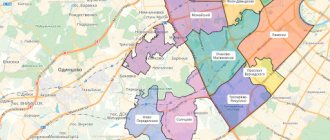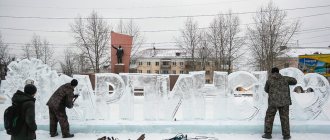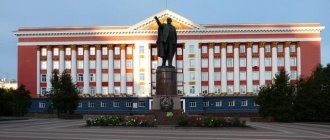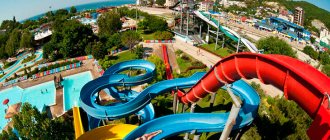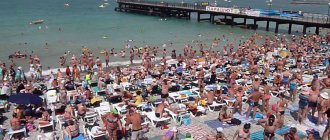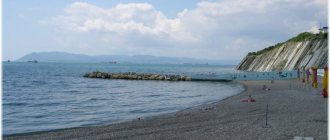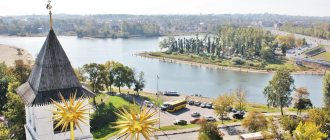By population
The number of residents in large populated areas is growing every year. Mostly young people come to big cities to get a better education than in their homeland. Citizens in older age choose developed megacities to improve their quality of life. The fact is that they usually house a large number of enterprises operating in a variety of fields.
Among them are both industry and various trading companies, textile factories and so on. Economic development requires a constant influx of highly qualified and motivated personnel.
We should not forget about the flow of low-skilled labor. We are talking about migrants who arrive in the Russian Federation from neighboring countries. Their main goal is to earn money for their family.
Some manage to seize the opportunity and stay in the country to further develop their professional qualities and, as a result, improve their financial conditions and quality of life.
Migration within a state plays two roles at once - positive and negative. The first is the constant development of “recipient” regions. Due to the increase in motivated students and qualified personnel, the number of professionals who further use their skills and acquired knowledge at work is growing. The development of industrial enterprises and scientific centers leads to improved living conditions and financial well-being of the region.
As a result, the settlement is constantly developing, attracting finance and new residents to the region. In parallel with this, infrastructure is developing, new residential buildings and all the necessary components of residential complexes - various educational institutions - are appearing.
The downside of this process is the withering and degradation of the “donor” regions. This happens for simple and understandable reasons - more or less interested young people with a good knowledge base are sent to regional centers. Young people with good potential remain in their native lands, but they cannot cover the outflow of personnel.
Regional centers are among the most populated states. They are also located in areas where there are industrial enterprises or companies involved in processing or mining. To calculate the exact number of residents, a population census is carried out every few years, allowing the result to be obtained as accurately as possible.
Moscow
The capital of the Russian Federation and also the largest city in the country. The total number of citizens is 12,678,079 people. It contains the best universities in Russia, as well as a huge number of different enterprises and industries. Tourists from all over the world are attracted here by many different attractions.
Saint Petersburg
The northern capital, located on the banks of the Neva. Almost half as many people live in it as in Moscow - 5,398,064. Due to the fact that for a long time St. Petersburg was the capital of the state, it is distinguished by a developed economy and many historical buildings that have survived to this day.
Novosibirsk
The largest city beyond the Urals with 1,625,631 inhabitants. The constant influx of new people is ensured mainly through interstate migration. One of the largest scientific centers in Russia, Akademgorodok, is located in the region.
Ekaterinburg
The city of Catherine currently has 1,493,749 residents. It is home to large mining companies. It also hosted a number of matches at the 2018 FIFA World Cup, for which a new stadium was built.
Kazan
According to official data, there are 1,257,391 people in the capital of Tatarstan. Active oil production is carried out on the territory of the republic, thanks to which the region is one of the richest in the Russian Federation. Also on its territory there are a large number of different universities that train specialists of the highest class.
Nizhny Novgorod
The number of residents with local registration increases every year due to migration; currently 1,252,236 people have the corresponding stamp in their passport. It changed its name several times - Novgorod of the Nizovsky land, then - Gorky, and in 1990 the previous name was returned. It is the capital of GAZ car production.
Chelyabinsk
1,196,680 citizens. The second largest (after Yekaterinburg) industrial, cultural and economic center beyond the Urals. Most recently it received the title of “city of labor glory”.
Samara
The center of the Volga economic region, the city of military and labor glory, where 1,156,659 people are registered. In 2022, it hosted a number of FIFA World Cup matches. It also contains the largest square and the tallest station building in Europe.
Omsk
The second largest populated area in Siberia with 1,154,507 Omsk residents. There are a number of enterprises in the oil, gas and chemical industries in the region. In 2022 it received the title of “city of labor glory”.
Rostov-on-Don
The administrative center of the Southern Federal District, the number of Rostov residents is 1,137,904. In the southern part of Russia it is a large economic, scientific, industrial and transport center. Also in 2022 it hosted matches of the FIFA World Cup.
Briefly: what is the level and quality of life, how is it measured?
I spoke in detail about what the standard of living is in my article about the standard of living in the countries of the world. In short, the standard of living is the degree to which people's most important needs are met. Thus, the standard of living in a city is the degree to which the key needs of the city’s population are met. The standard of living is determined to a large extent by the level of well-being and level of consumption of the city's population. The quality of life in a city is, among other things, complemented by the state of health care, the environment, the social situation and other parameters.
The standard of living indicator will be useful both for immigrants from other countries and for internal migrants changing their place of residence.
The standard of living in a city is calculated based on a set of socio-economic indicators and criteria : demographics, welfare and cost of living, employment level, safety, crime rate, climate and ecology, geography, public transport, silence, infrastructure for children, level of public services and others.
By area
Thanks to the rapid pace of urbanization, which is both a consequence and outcome of the economic development of the regions of the Russian Federation, the area of settlements in the Russian Federation is constantly increasing. This is facilitated by a large amount of vacant land, so there is always room for the construction of new industrial centers, further development of infrastructure and the emergence of new residential complexes.
There are practically no agglomerations in the country, since development is carried out mainly in empty spaces. Basically, new areas appear along existing transport arteries, which usually extend along the entire metropolis, and then merge with a major highway or regional or even federal highway.
One of the features of megacities in Russia is the gradual increase in the area they occupy. Thanks to this, the central parts usually contain beautiful examples of old architecture, which have survived almost in their original form to this day. New microdistricts are being built according to modern standards and look very different from areas with old buildings.
Moscow
The capital of the Russian Federation has not only the largest population, but also a huge area - 2561 square kilometers. From time to time, regional territories are included in its composition, due to which the metropolis can be called an agglomeration.
Saint Petersburg
The city on the Neva is the second largest in the country. The total area of the territories is 1439 square kilometers. The large area allows for the regular construction of a large number of new buildings for various purposes.
Volgograd
859 square kilometers. Volgograd is quite long, as it is located on both sides of the Volga. A million-plus city.
Permian
799 square kilometers. In 1916, the first university in the Urals was opened there. A characteristic feature of the metropolis is a large number of small rivers passing through the territory.
Ufa
The capital of the Republic of Bashkortostan with an area of 708 square kilometers. Ufa is the most spacious settlement in Russia. The basis of the economy is the trade, economic and fuel-industrial complexes.
Tyumen
698 square kilometers. The first fort on the territory of Siberia was founded at the end of the 16th century. The scientific sphere is very developed due to large financial flows from oil and gas organizations.
Orsk
Area – 621 square kilometers. The second largest metropolis in terms of population and industrial development in the Orenburg region. Mechanical engineering, non-ferrous metallurgy, mining, food and light industries are well developed.
Voronezh
596 square kilometers. The settlement is the birthplace of the Airborne Forces and the cradle of the Russian Navy. It is considered one of the largest economic centers in the country.
Omsk
A Siberian city covering an area of 572 square kilometers. The increase in the size of the metropolis was facilitated by the competent development of available free spaces. Funding for these procedures comes from the regional budget, replenished by oil and gas industry enterprises.
Kazan
The capital of the Republic of Tatarstan occupies 425 square kilometers. The large territory allows for the qualitative development of the Russian region. This helps improve the well-being of residents and the influx of new citizens.
The best regions of Russia for moving to permanent residence
To fairly assess the well-being of residents, many factors must be taken into account. Therefore, in addition to the best cities in Russia, we will name the fastest growing and best regions of Russia:
- Moscow region.
- Republic of Tatarstan.
- Belgorod region.
- Krasnodar region.
- Leningrad region.
- Voronezh region.
- Khanty-Mansiysk Autonomous Okrug - Ugra.
- Kaliningrad region.
- Yamalo-Nenets Autonomous Okrug.
- Lipetsk region.
It is these regions that are recommended to be considered from the point of view of moving for permanent residence in 2022.
By density
Population density is an indicator that allows you to determine the dense population of a particular settlement. It is calculated quite simply - the total number of residents is divided by the area occupied by the metropolis. High density may indicate two factors at once - in the metropolis there is either a large number of high-rise buildings, or, on the contrary, the development is dense and mainly contains cheap and low-quality buildings.
The list of the most densely populated megacities of the Russian Federation includes those in which preference is given to the construction of residential complexes, almost entirely consisting of high-rise buildings. In addition to them, all the infrastructure necessary for a comfortable life is being built and new jobs are created.
Moscow
The capital of the Russian Federation is in the top according to this indicator. The population density is 4950 people/km². The metropolis contains many residential areas with high-rise buildings, many of which contain 20 or more floors.
Saint Petersburg
The second largest federal subject of Russia with an indicator of 3847 people/km². The historical center contains mainly old buildings; new residential areas are built up with tall buildings. In this case, there is practically no difference with the capital.
Sevastopol
The third large federal subject with a density of 519 people/km². It is a city of federal significance. Its main features are a large number of attractions and the status of a base for the Russian Black Sea Fleet.
Moscow region
The Moscow region is the second largest region of the Russian Federation, with a population density of 173 people/km². It is also the second federal subject after the capital in terms of income and quality of life. The main items of income are taxes on the profits of organizations and individuals.
The Republic of Ingushetia
The smallest region in Russia in terms of area, however, it is in the top 5 in terms of population density with indicators of 162.36 people/km². It has a large amount of fertile soil, as well as decent gas and oil reserves. An oil pipeline connecting Baku and Novorossiysk is also laid across the territory.
Chechen Republic
Density – 91.44 people/km². It is an important economic center of the North Caucasus economic region. Budget revenues come from developed agriculture and the oil and gas industry.
Republic of North Ossetia-Alania
A neighbor of the Chechen Republic, the density is 87.25 people/km². Agriculture and the electricity sector are well developed in the territory. In the latter, special attention is paid to the construction of hydroelectric power stations on small rivers.
Krasnodar region
Density – 75.19 people/km². There are more than six dozen different minerals in the depths. The Krasnodar Territory is the oldest oil-producing region in Russia, with more than 150 oil fields located on its territory.
Republic of Crimea
The Crimean peninsula has been the subject of controversy between Russia and Ukraine since 2014. As part of the Russian Federation, it is one of the ten most densely populated federal subjects with a density of 73.33 people/km².
Republic of Kabardino-Balkaria
The last position of federal subjects has a density value of 69.64 people/km². The basis for replenishing the budget is agriculture, as well as more than a hundred different industrial enterprises. There are also several hydroelectric power stations located on the territory of the republic.
Full list
The Russian Federation includes more than 1,100 cities. This status is given to settlements where more than ten thousand people live. Cities are divided into several categories - small (from 10 to 50 thousand people), medium (from 50 to 100), large (from 100 to 250), large (from 250 to 1 million) and largest (cities with a population of one million). Representatives of the latter two are located mainly in the European part of the Russian Federation, closer to its southern part.
